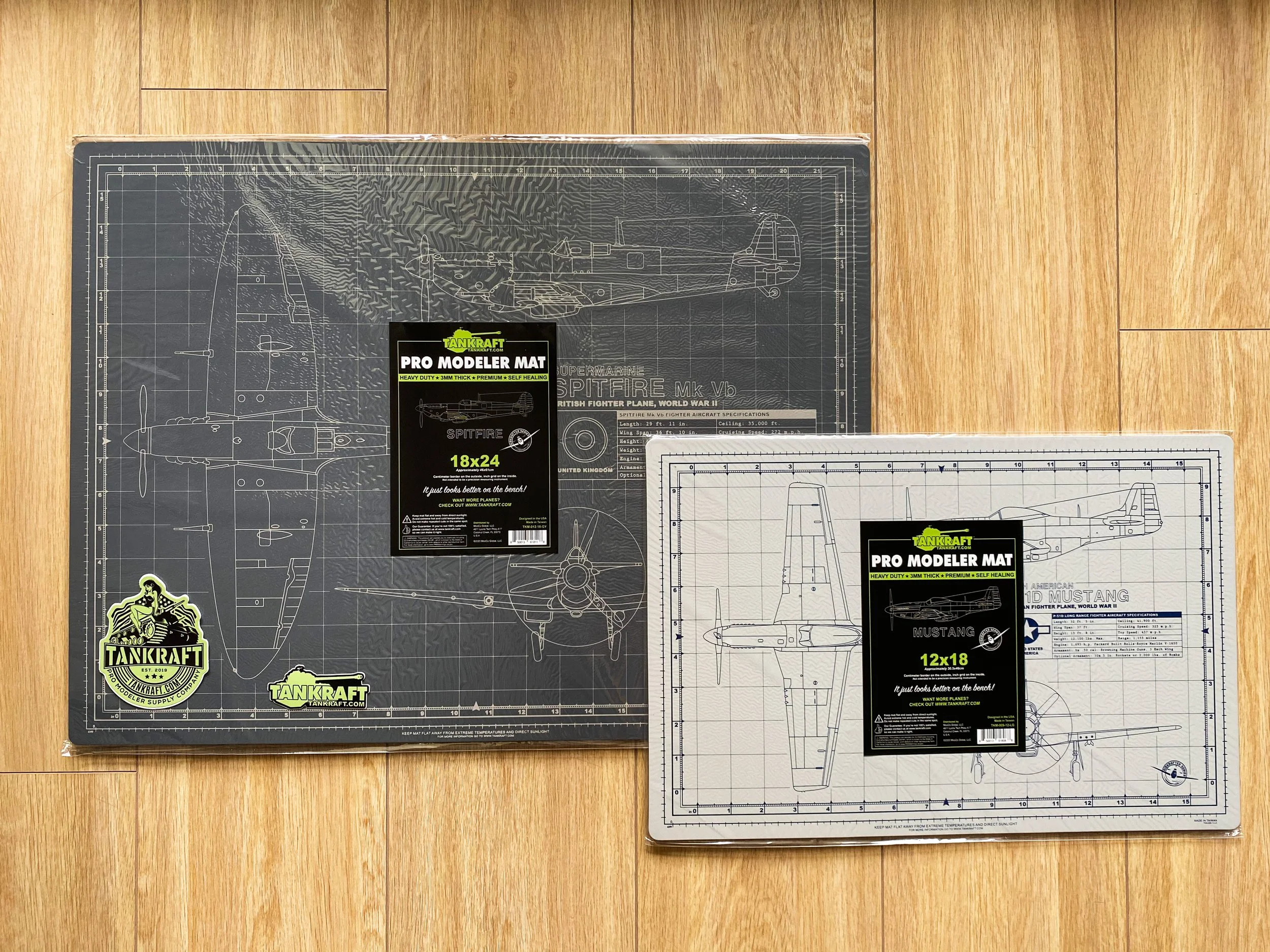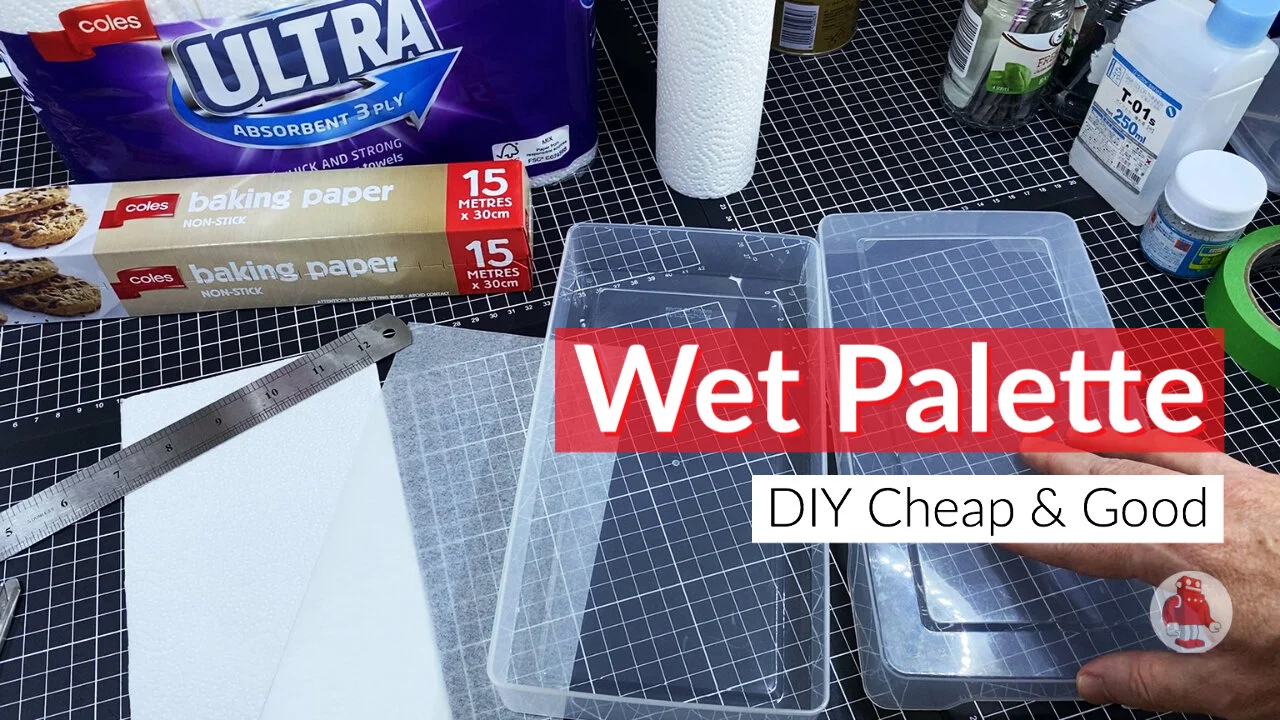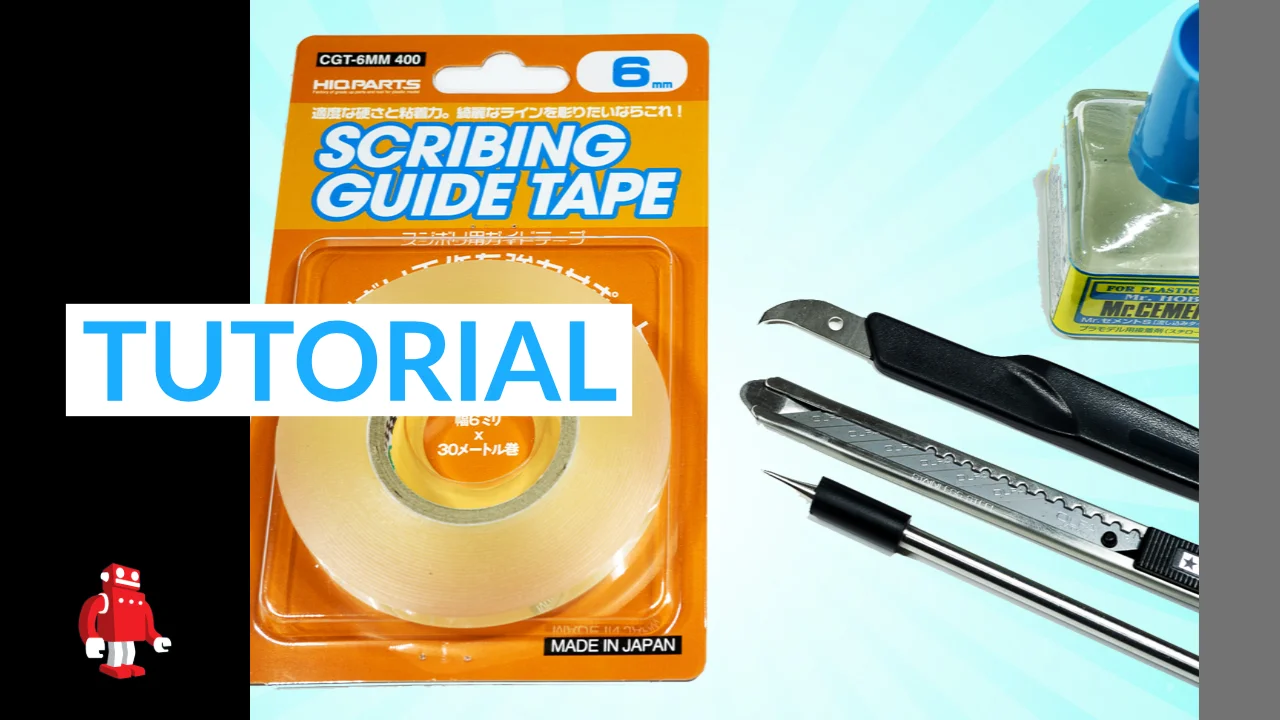What are the Best Paints for Plastic Models?
A Basic Guide to Paints for Plastic Modelling.
Paint can feel quite intimidating for newcomers to our hobby and I’d really like to help simplify this for us. With each vendor’s marketing team working very hard to differentiate their products in a crowded marketplace it must be a tough job but for us, the consumer and end user, we just need to know what it is, how it works and if it’s the right tool and choice for our intended workflow and result. Our working environment will also help us to choose. For example, over school holidays I use water based products as possible as my family are all at home but when I have my studio to myself, I really enjoy the performance of solvent based paint whilst taking the necessary health and safety precautions such as wearing a respirator with organic solvent filters, using a spray booth for extraction of fumes and ensuring I have adequate ventilation.
Paint Types
A very small sample of the various paints and paint types I have in my collection. Hi my name is Lincoln and yes I buy way too many paints…
We can broadly classify paints into 2 types, water based and solvent based. All paints consist of 3 parts;
Pigments - this is the color part and they are fine powders that do not dissolve but are suspended in the paint. We need something to help them stick to the surface and that is the…
Binder - is the substance that (hopefully!) keeps the pigment on the surface and is often an Acrylic Polymer.
Vehicle - is the transport for the mix of the above to travel from the bottle to the model and then evaporate. It can be water or a solvent.
It’s tricky as some paint manufacturers complicate this by using the word Acrylic that may appease government agencies restricting solvent paints but who allow water based products for example. The word “acrylic” seems to have become synonymous with water based paints but in fact many modern paints contain acrylic polymers as their binder and this is why it’s so confusing. The important thing to know then is of course the Vehicle or transport medium as this will tell us more about the paint’s properties but also and most importantly, what we need to use for thinning and clean up.
A quick note on thinning and clean up.
Thinning means to thin the paint whilst retaining performance properties.
Clean up means to remove the paint from tools regardless of the properties of the remaining paint which is most often then discarded. Some solvents destroy the properties of paint when used for clean up.
Water Based Acrylic Paints
Have a water vehicle and both thin and clean up with water. Well, until they cure. Modern water based acrylic paints are a technological marvel. Low toxicity, they have water as their vehicle layer and so thin and clean up with water and are heavily marketed towards beginners. I also re-started the hobby as an adult with these paints. Yes, I used Humbrols as an unsupervised child... The 70’s were CRAZY! The trouble is that they are in fact one of the most technical and challenging paints to master, especially for airbrushing. They dry to the touch in minutes as they develop a thin skin but can take up to 24hrs or even days or more to fully cure and gain properties of hardness, adhesion and solvent resistance.
A small sample of water based acrylic paints that I have in my workshop.
These paints are available in airbrush ready and regular versions for the brush. If you are going to be using these water based paints extensively, I do suggest having some of each as making the brush version airbrush well seems quite challenging for beginners, it’s easily one of the top questions I am frequently asked. The difference is that the airbrush versions are made with airbrush thinner included which contains a small amount of food grade organic solvent to lower the surface tension of water and make them easier to spray. Many people also seem to have success with adding Flow Improver which is simply a slightly more concentrated solution of airbrush thinner.
Water Based acrylics for hand brush application.
Water Based acrylics for airbrush application
Water Based brush and airbrush varnish.
You may come across the modelling myth that water based acrylics cannot have solvent based clear coats applied over them but this is simply not true. For example, this piece was hand painted with Acrylicos Vallejo Model Color, a fully water based paint and allowed to dry for 24hrs and then sprayed with Mr Super Clear from a can, a hot solvent based clear and was not damaged at all.
Vallejo Model Color applied by hand brush and allowed to fully dry and cure overnight was clear coated with Mr Super Clear from a can with no ill effects.
I also do not recommend trying to spray ready made “acrylic clears” over freshly painted acrylics with “wet coats” as the clears also contain small amounts of organic solvents which will craze your previous paint work. Mist or dust coats are ok. Manufacturers again suggest waiting at least 24hrs for the paint to cure before this application.
Acrylic Lacquer Paints
Considered the Gold Standard by the Japanese professional Sci-Fi modellers I work with and for good reason, the performance is far and above the best. Finish, sheen, durability, workflow, zero tip dry and super fast drying time plus the fact that they do NOT cure means they are incredibly versatile paints. This naturally comes with a strong downside, they are also the most toxic. We must use caution, a respirator mask with organic solvent filters and appropriate ventilation.
They contain an acrylic polymer binder and use stronger organic solvents for their vehicle. They thin with “lacquer thinner” and clean up with both “lacquer thinner” and “tool cleaner”.
Various brands of acrylic lacquer paints in my workshop.
In the time it takes you to prepare your next step, lacquer paints have dried enough to allow you to immediately continue your work and can be layered over with clear coats and varnish immediately or even sanded back should you find something that needs repair. Plus this is what the original Star Wars props were painted with - Floquil brand railway modelling acrylic lacquers - really!
One more bonus is that acrylic lacquer paints can be used as primers as well because they chemically etch themselves into the plastic surface and are so durable.
Tamiya Acrylics deserve a special mention as they are a very big part of the reason for confusion. Wonderful paints that are an impressive chemical engineering feat, they were marketed in the early days of plastic modelling in Japan as a locally produced water based paint for school children and also had their early start into the USA by using this same strategy gaining access into California. Yes they will thin with water, alcohol and lacquer thinners but in truth, they perform best with lacquer thinner. That’s why the early paint stands had the yellow cap bottle along with the blue, even Tamiya themselves were alluding (confessing!?) to the fact that they are indeed acrylic lacquer paints.
Tamiya “Acrylics” are an acrylic lacquer paint.
Another modelling myth you may hear is that lacquer paints cannot be hand brushed. In fact, it’s quite the opposite and they are one of the best hand brushing paints and one of my core skills. I can assure you that much like any other medium and technique, that once practiced it’s not only possible but due to the unique properties of these paints, can produce amazing results not possible with other paints. It’s also quite popular in Japan for all genre of model making and made famous by first generation aviation modellers such as my friend Masaharu Nakata Sensei, a pioneer artist with Hasegawa Models.
Acrylic lacquer paints are wonderful and expressive paints for hand brushing and we can fine tune many effects, such as a mottled underlayer shown here as well as very smooth layers.
Enamel Paints
Enamels were our first modelling paints and are still available and useful but their use has changed over the years. They went from being one of our primary paints for each step such as color coats and varnishes to more of a secondary paint for effects. Humbrols are still an impressive paint and the most durable when fully cured within a day or two and my favourite for drybrushing and dust effects.
Tamiya enamels are excellent but I understand they are not widely available outside of Japan and Australia and a little more technical, they don’t seem to cure. Friends in the US tell me that Testor’s Model Master is most available. Secondary and specialist paints are now very popular from vendors such as Mig Productions and AK-Interactive. Enamel paints thin and clean up with enamel thinners and tool cleaners.
I must also admit a certain amount of nostalgia when using enamels, the smell reminds me of a total lack of parental supervision haha~!
Enamels still rate a place on my bench are very hand for their pigment density, sheen and/or metallic luster for painting small details.
So which are the best paints Linc? Seriously, if there was a “Best Paint” we’d all use that and the rest would disappear. What I can tell you I have learned is that they are ALL good paints and it’s more about how and when we use them. It’s up to our knowledge and skill to combine these different paints to make interesting finishes on our models.
It’s no secret that I am a big fan of acrylic lacquers for the volume work I do but as you can see, I still own a huge number of water based acrylics and enamels as well and use all 3 types of paint on every single model. Plus I still like to experiment and change things up to continue to challenge myself, learn and grow in our hobby.
Hope this article is useful and helpful for you, happy modelling friends.
Ready to See These Paints in Action?
Now that you’ve got a solid understanding of paint types for plastic modeling, it’s time to put that knowledge to work! Check out my books for detailed techniques, paint recipes, and step-by-step guides to creating stunning, professional-grade finishes on your models. Whether you're just starting or looking to refine your skills, these resources will help take your projects to the next level!
Cheers,
Linc
Would you like to support my work? I am not sponsored by “Big Nipper” but Community Funded. Really!











Linc’s Favourite Brushes!